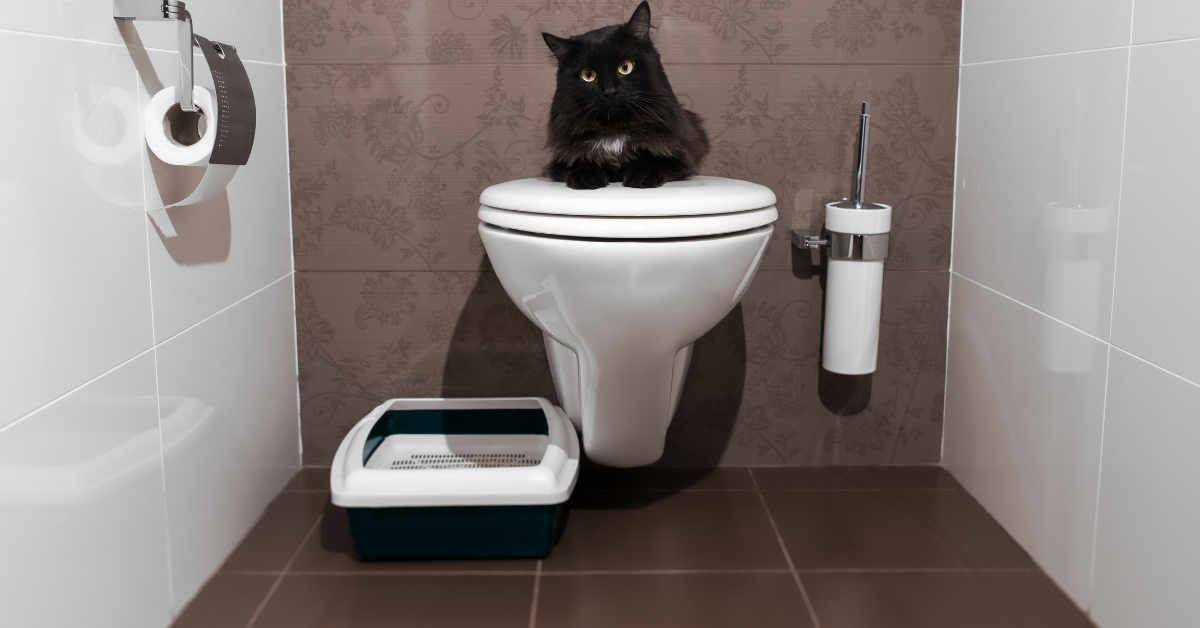Potential Risks of Flushing Cat Poop Down Your Toilet - Tips for Better Disposal
Call TodayIn this article below you'll find additional reliable resources when it comes to Don’t flush cat feces down the toilet.

Intro
As pet cat owners, it's necessary to be mindful of exactly how we get rid of our feline pals' waste. While it might appear practical to purge feline poop down the bathroom, this technique can have destructive effects for both the setting and human wellness.
Ecological Impact
Purging feline poop presents harmful pathogens and parasites into the water, posturing a significant danger to water environments. These impurities can adversely affect aquatic life and compromise water quality.
Health Risks
Along with environmental problems, purging cat waste can additionally present health threats to people. Pet cat feces might include Toxoplasma gondii, a parasite that can trigger toxoplasmosis-- a potentially extreme disease, particularly for expecting women and people with damaged immune systems.
Alternatives to Flushing
The good news is, there are much safer and extra accountable means to get rid of cat poop. Think about the following choices:
1. Scoop and Dispose in Trash
The most typical approach of dealing with feline poop is to scoop it right into a biodegradable bag and throw it in the garbage. Make sure to make use of a devoted clutter inside story and get rid of the waste without delay.
2. Usage Biodegradable Litter
Opt for naturally degradable feline trash made from products such as corn or wheat. These trashes are eco-friendly and can be securely dealt with in the trash.
3. Bury in the Yard
If you have a lawn, think about burying cat waste in a designated area away from veggie yards and water resources. Make sure to dig deep sufficient to avoid contamination of groundwater.
4. Install a Pet Waste Disposal System
Invest in a pet waste disposal system particularly developed for cat waste. These systems make use of enzymes to break down the waste, lowering smell and environmental influence.
Verdict
Accountable animal ownership expands beyond supplying food and shelter-- it also entails appropriate waste management. By avoiding purging cat poop down the commode and choosing alternative disposal techniques, we can reduce our ecological footprint and secure human health.
Why Can’t I Flush Cat Poop?
It Spreads a Parasite
Cats are frequently infected with a parasite called toxoplasma gondii. The parasite causes an infection called toxoplasmosis. It is usually harmless to cats. The parasite only uses cat poop as a host for its eggs. Otherwise, the cat’s immune system usually keeps the infection at low enough levels to maintain its own health. But it does not stop the develop of eggs. These eggs are tiny and surprisingly tough. They may survive for a year before they begin to grow. But that’s the problem.
Our wastewater system is not designed to deal with toxoplasmosis eggs. Instead, most eggs will flush from your toilet into sewers and wastewater management plants. After the sewage is treated for many other harmful things in it, it is typically released into local rivers, lakes, or oceans. Here, the toxoplasmosis eggs can find new hosts, including starfish, crabs, otters, and many other wildlife. For many, this is a significant risk to their health. Toxoplasmosis can also end up infecting water sources that are important for agriculture, which means our deer, pigs, and sheep can get infected too.
Is There Risk to Humans?
There can be a risk to human life from flushing cat poop down the toilet. If you do so, the parasites from your cat’s poop can end up in shellfish, game animals, or livestock. If this meat is then served raw or undercooked, the people who eat it can get sick.
In fact, according to the CDC, 40 million people in the United States are infected with toxoplasma gondii. They get it from exposure to infected seafood, or from some kind of cat poop contamination, like drinking from a stream that is contaminated or touching anything that has come into contact with cat poop. That includes just cleaning a cat litter box.
Most people who get infected with these parasites will not develop any symptoms. However, for pregnant women or for those with compromised immune systems, the parasite can cause severe health problems.
How to Handle Cat Poop
The best way to handle cat poop is actually to clean the box more often. The eggs that the parasite sheds will not become active until one to five days after the cat poops. That means that if you clean daily, you’re much less likely to come into direct contact with infectious eggs.
That said, always dispose of cat poop in the garbage and not down the toilet. Wash your hands before and after you clean the litter box, and bring the bag of poop right outside to your garbage bins.
https://trenchlesssolutionsusa.com/why-cant-i-flush-cat-poop/

I'm just very eager about Can You Flush Cat Poop Down The Toilet? and I really hope you liked the entire blog entry. Do you know someone else who is inquisitive about the topic? Please feel free to promote it. I love reading our article about How to Dispose of Cat Poop and Litter Without Plastic Bags.
Customer Reviews